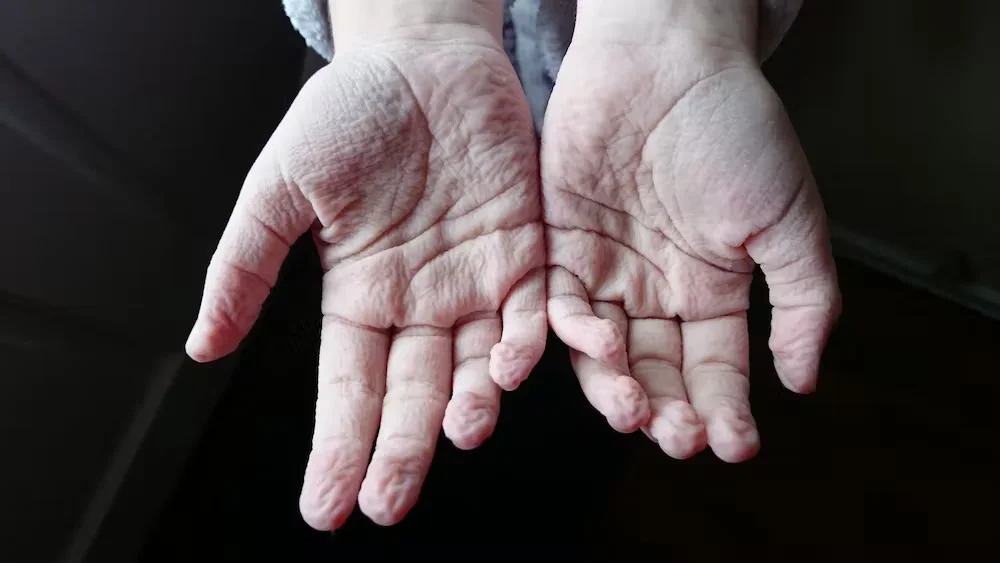If you’ve ever soaked in a bath or spent a long time swimming, you may have noticed your fingers and toes start to wrinkle. This is a common phenomenon that has puzzled scientists for years. However, recent research suggests that there may be surprising benefits to having fingers that wrinkle in water.
For years, it was thought that finger and toe wrinkling was simply a result of water absorption. When you soak in water, the outermost layer of your skin absorbs water, causing it to expand. This expansion was thought to be what caused the wrinkles. However, new research suggests that this isn’t the case.
According to a study published in Biology Letters, the wrinkling of fingers and toes in water is actually an active process that is controlled by the nervous system. The study found that when nerves in the fingers and toes are blocked, the skin doesn’t wrinkle in water.
This discovery led researchers to hypothesize that finger and toe wrinkling might serve a purpose. They conducted a series of experiments to test this hypothesis and found some surprising results.
One of the experiments involved participants trying to pick up wet objects with wrinkled and non-wrinkled fingers. The results showed that participants were able to pick up wet objects more quickly and accurately with wrinkled fingers. The wrinkles appeared to improve grip in wet conditions.
Another experiment involved participants moving objects from one container to another, with one container filled with water and the other filled with sand. The participants had to use either wrinkled or non-wrinkled fingers to move the objects. Again, the results showed that participants were more successful when using wrinkled fingers, as the wrinkles improved the ability to grip objects in wet conditions.
So why do our fingers and toes wrinkle in water?
According to the researchers, it’s likely an adaptation that evolved to improve our ability to grip wet objects. Wrinkled fingers and toes may have provided an evolutionary advantage to our ancestors who needed to grip wet surfaces to gather food or avoid slipping in wet conditions.
In addition to the grip-enhancing benefits of finger and toe wrinkling, there may be other advantages as well. Some researchers believe that wrinkling may help to increase sensitivity to touch, which could be useful for tasks that require fine motor skills.
Overall, the discovery that finger and toe wrinkling is an active process controlled by the nervous system and may have evolved to improve grip in wet conditions is a fascinating one. While more research is needed to fully understand the benefits of finger and toe wrinkling, it’s clear that this seemingly innocuous phenomenon may have played an important role in our evolutionary history.




